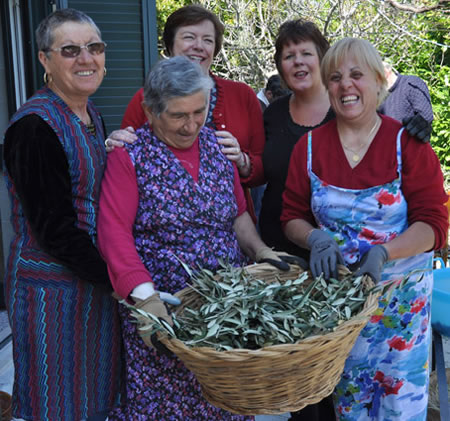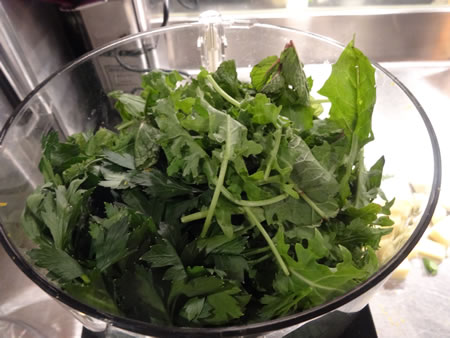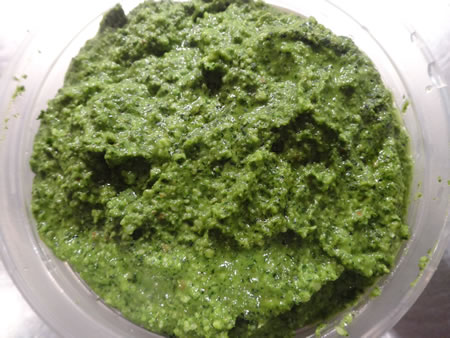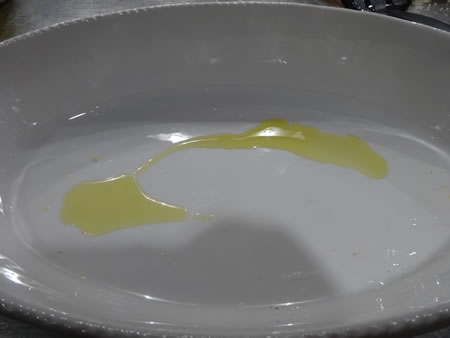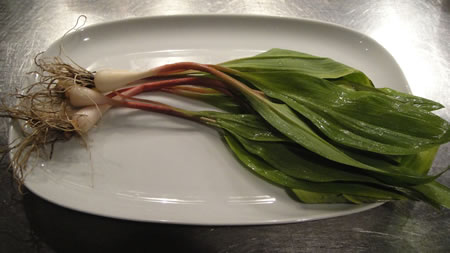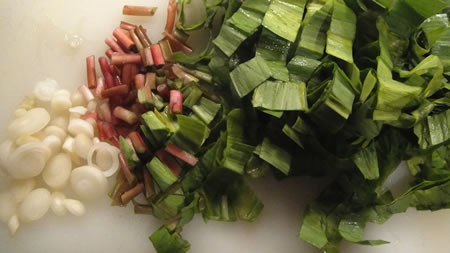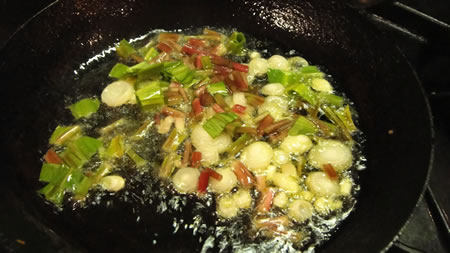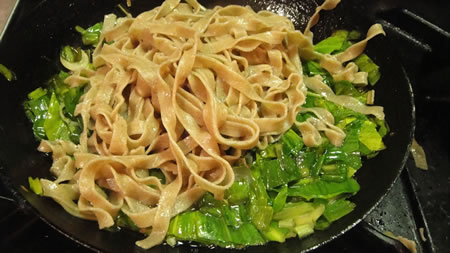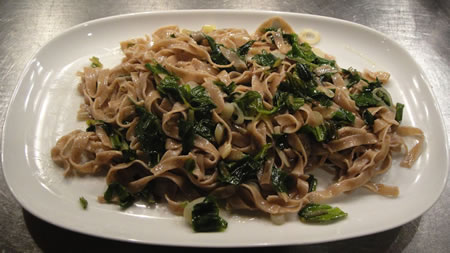Tagged Pasta
Wild Spring Greens Pesto & Pasta
I just returned from a trip to Italy – where this time of year you see legions of Nonna’s in the morning sun bending over their unsure legs, pulling something or another out of the ground. Content, they stuff their treasures in bags and sacks and hobble home. As we walked thru the Borghese gardens, I couldn’t help but notice the frenzy. It turns out the tradition of foraging and eating wild greens in the spring is an ancient one – going back not only to the middle ages but ancient Rome and Greece. High in antioxidants, vitamins and minerals, the Greek physician Hippocrates encouraged his peers to feast on wild greens in the spring as a strengthening tonic for both the body and soul. Point well taken as the Nonnas move through the park. A young Italian man explained that “In the spring, it is what you do.” Silly me for asking! “You must clear out the winter in your body.”
As soon as the early greens appear, traditional cooks forage in forests, and green markets for dandelion, watercress, mustard greens, lovage, mint, coriander, savory, sage, wild onions and garlic, often eaten as a salad or sautéd in olive oil as a side dish or mixed with pasta.
My take is a bit different. I like to make an untraditional pesto. This recipe is fast, healthy, easy and raw. It can be easily be prepared with a food processor although traditionalists will want to use a mortar and pestle which will give you a finer mouth feel. Unless I feel like fussing or impressing my friends with my borage shoots – the processor works just fine and saves so much time. I’ll often double or triple the recipe to freeze for a quick meal later in the season.
Delicious and very satisfying – I like this on toasted garlic bread as an appetizer – “Wild Greens Bruschetta” or as shown over pasta – Wild Greens and Kale Pesto Over Buckwheat Pizzoccheri Pasta”. With a few slices of prosciutto and a glass of a crisp white wine – a Pinot Bianco perhaps – it makes a perfect spring lunch or dinner.
An important note – foraging is fine if your dandelion studded lawn hasn’t been sprayed and is free of dogs and deer. I highly suggest that you visit your local farmer’s market for baby kale, spring herbs, cress & mustard greens.
Wild Greens and Kale Pesto Recipe
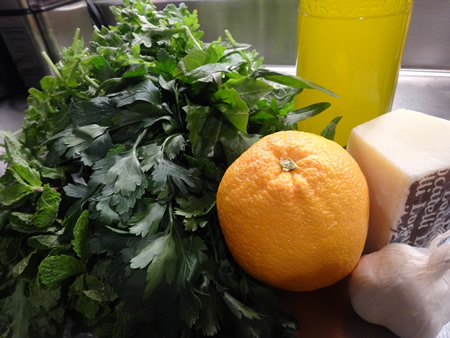
2 Bunches of Baby Kale – full formed kale is fine, you will just have to take the time to strip the stalks
1 Bunch of Dandelion Greens
1 Bunch of Flat Leaf Parsley
1 Bunch of Mint
1 Orange – for zest
4 oz Raw Almonds – Pine Nuts, Brazil Nuts, Pistachios all work equally well
4 to 8 oz of Pecorino Romano Cheese – a nice Italian man explained to me that it melts better.
2 to 4 Cloves of Garlic
1 Cup + Extra Virgin Olive Oil – I prefer the early spring green oil if available
Sea Salt or Cayenne Pepper if you choose
Prep your greens by washing and drying well. I spray even organic vegetables with a solution of 2 T vinegar to 2 cups of water and then rinse well.
Rough chop the greens and cube the cheese. The processor works best when all the items to be processed are about the same size.
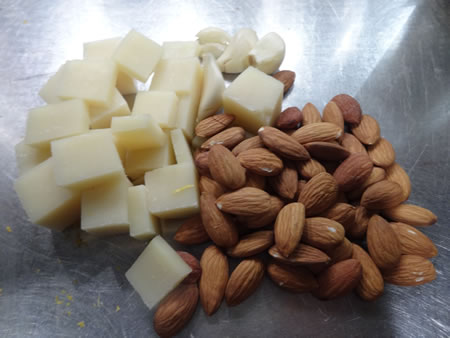
Zest the Orange. Juice the orange this is a nice addition to the pesto giving the greens a bit of a bright taste.
Begin by chopping 1/2 the greens in the food processor. Drizzle 1/2 the olive oil and scrape down the sides of the bowl.
While the processor is on add the cheese, nuts, garlic and the zest. Scrape down the bowl.
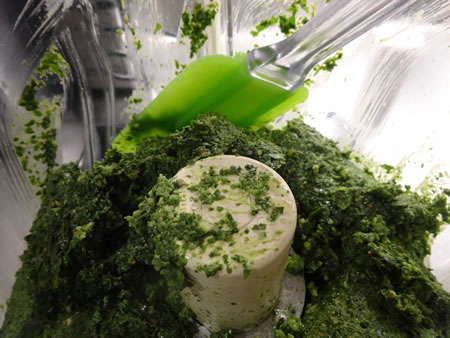
Add the balance of the greens, and while the processor is on drizzle in the balance of the oil and a splash orange juice.
Taste for balance – you may need more oil or salt – I find that the cheese is salty enough. The addition of cayenne is nice as well.
This pesto is ready to add to pasta or can be frozen for later use. When serving with pasta – make sure that you add a splash of oil to the pasta bowl before you add the cooked pasta. This will allow the pasta and the pesto to blend.
Buckwheat Pizzoccheri is a particularly toothy pasta. It is also lovely with a whole wheat orecchiette or a farfalle
Tutti a Tavola!
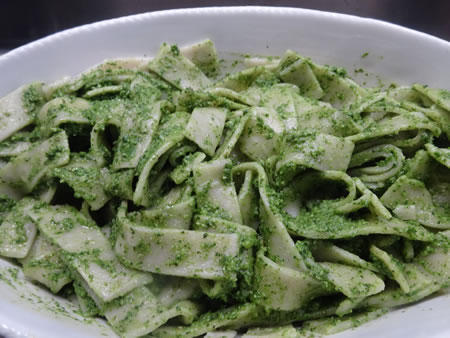
Union Square Market and Ramps
This is just the kind of day I like. Up before dawn, but who could tell because it is pouring rain. I love spring rain storms and the smell of the garden or the smell of the city streets. It reminds me of tramping thru Bloomsbury or shopping on the Place de Madeline. A rainy day in New York City is equally as special.
It is Wednesday in Union Square Market and the early spring has pushed forth a cornucopia of salad greens and the mighty Spring Ramps. The urban foragers go crazy for the wild ramps and the pickling, sautéing and chopping begin in earnest.
Have you ever had a pickled Ramp? It is wonderful in a martini when an onion is called for. Or along side a grilled burger. My favorite way to use ramps is in a simple pasta dish replacing the garlic with the sauteed ramps in a Spaghetti Al Olio.
It is a wonderful primi piatti or satisfying as a late night supper. Better still my daughter relishes every fork-full. I cut up use the entire ramp, from the bulb to the glossy green leaves. Sautéing each part separately is the secret – as with all good cooking, the same size pieces cook best. By adding the same size and textured pieces to your saute pan, you will cook the ramps evenly – insuring a perfect meal. First slice the bulbs, then the shaft, then the leaves – adding each to the pan in succession allowing each part of the ramp to cook a bit before adding the next.
This meal is particularly good with crusty bread and a big green salad.
1 lb of whole wheat pasta – preferably fettucini
Two good size bunches of ramps
Olive oil – I cook with extra virgin
Sea Salt
Black Pepper
Grated Parmesan Cheese
1 – Bring a pot of water to a boil with salt.
2 – Slice the ramps – from the bulb to the leaves
3 – Cook the pasta in the boiling water.
4 – While the pasta is cooking begin sautéing the ramps – first cooking the sliced bulbs and then the stems.
5 – Drain the pasta
6- Add the ramp leaves to the saute pan and immediately add the cooked pasta.
7 – Toss with parmesan cheese and serve on a platter
